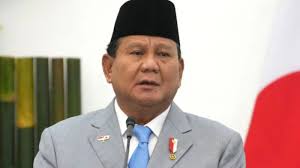India-Indonesia Relations

- 27 Jan 2025
In News:
The President of Indonesia, visited India as the Chief Guest for the 76th Republic Day in January 2025. This marked the 75th anniversary of diplomatic ties, reaffirming the commitment to deepen cooperation in economic, strategic, cultural, and defense domains.
Historical Foundations
- Ancient Civilizational Links: Trade and cultural exchanges date back to the 2nd century BCE, reflected in the influence of Hinduism and Buddhism on Indonesian society (e.g., Ramayana, Mahabharata, Borobudur, Prambanan).
- Modern Diplomatic Ties:
- Formalized in 1950, with a Treaty of Friendship in 1951.
- Collaborated in the 1955 Bandung Conference and co-founded the Non-Aligned Movement (1961).
- Indonesia’s first President Sukarno was the Guest of Honour at India’s first Republic Day in 1950.
- Cold War and Beyond:
- Relations cooled in the 1960s but revived in the 1980s.
- The 1991 'Look East' Policy and the 2014 'Act East' Policy revitalized ties.
- Strategic Partnership in 2005; upgraded to a Comprehensive Strategic Partnership in 2018.
Key Pillars of Cooperation
- Economic and Trade Relations
- Trade Volume: Reached USD 38.8 billion (2022–23), targeted to increase to USD 50 billion by 2025.
- Key Imports: India imports coal, palm oil, and nickel.
- Investment: Indian investments in Indonesia total USD 1.56 billion in infrastructure, textiles, and energy.
- New Developments:
- MoU on Local Currency Settlement Systems to reduce dependency on USD.
- Focus on resolving trade barriers via forums like WGTI and BMTF.
- Cooperation in critical minerals like nickel and bauxite.
- BPCL to invest USD 121 million in the Nunukan gas block.
- Military Exercises: Garuda Shakti (Army), Samudra Shakti (Navy), and participation in Milan, Komodo, Super Garuda Shield, etc.
- Key Agreements:
- 2018 Defense Cooperation Agreement.
- White Shipping Information Exchange (WSIE).
- Proposal for Bilateral Maritime Dialogue and Cyber Security Dialogue.
- Joint vision on maritime cooperation under SAGAR (Security and Growth for All in the Region).
- BrahMos Deal: Talks underway for Indonesia’s acquisition of BrahMos missiles (~USD 450 million).
- Cultural Diplomacy: Shared heritage of Hindu-Buddhist traditions; India assisting in restoring Prambanan temple.
- Tourism & Connectivity: Direct flights since 2023; India is the second-largest source of tourists to Bali.
- New Initiatives:
- Cultural Exchange Programme (2025–2028).
- India reaffirmed the Kashi Cultural Pathway for heritage restoration and repatriation of artifacts.
- Science, Technology, and Space
- ISRO supports Indonesia’s satellite ambitions; agreement on Biak Tracking Station.
- Renewed MoU on STEM cooperation.
- Areas of collaboration: Quantum tech, high-performance computing, and digital public infrastructure.
- Energy and Health Security
- Collaboration on biofuels under the Global Biofuels Alliance.
- Joint initiatives on mid-day meals and public distribution systems.
- MoUs on digital health, capacity building, and traditional medicine.
Multilateral and Regional Cooperation
- ASEAN & Indo-Pacific: Commitment to ASEAN centrality and cooperation through IPOI, India-Indonesia-Australia Trilateral, and ASEAN-India outlook.
- Global Platforms: Collaboration in BRICS, G20, IORA, and advocacy for the Global South.
- Climate & Disaster Resilience:
- Joint efforts under CDRI.
- Indonesia invited to the International Solar Alliance and Big Cat Alliance.
Key Challenges
- Trade Imbalance: Heavy reliance on limited imports (coal, palm oil); imbalance persists as Indonesia’s trade with China is far greater (~USD 139 billion).
- Bureaucratic & Regulatory Barriers: Slow progress on infrastructure and investment due to permit and regulatory issues.
- Geopolitical Pressures: Indo-Pacific instability and China's expanding influence pose strategic challenges.
- Logistical Constraints: Inadequate connectivity infrastructure hinders deeper integration.
Way Forward
- Trade Diversification: Include sectors like tech, agriculture, and green energy.
- Defense Deepening: Expand joint exercises, maritime patrols, and intelligence-sharing.
- Enhance Connectivity: Boost air, sea, and digital linkages for trade and tourism.
- Green Collaboration: Advance renewable energy and sustainable mining ventures.
- Cultural & Educational Engagement: Promote student exchanges, scholarships (e.g., ITEC), and diaspora involvement.
Conclusion
India and Indonesia share deep-rooted civilizational links and are strategically aligned in the Indo-Pacific. Their evolving Comprehensive Strategic Partnership encompasses trade, defense, technology, and cultural diplomacy. Strengthening this partnership will not only boost bilateral growth but also ensure a stable, multipolar, and cooperative regional order.
